The rising transportation costs have become a burning issue, hitting many sectors and businesses across the globe. As predicted, we will see ocean freight costs skyrocketing further in 2021. So what factors will influence this rise? How are we doing to cope with that? In this article, we will give you a closer look at the soaring freight rates globally.
Ocean freight rates continue to set new highs in 2021
Ocean freight rates have soared greatly for all trade routes since September 2020 due to the ongoing impacts of the COVID-19 pandemic.
The freight rates in August reached $10,174/FEU, an increase of 466% on the previous year. Also, the charter prices for container vessels have risen fourfold compared to last August, according to the Freightos Baltic Index (FBX).
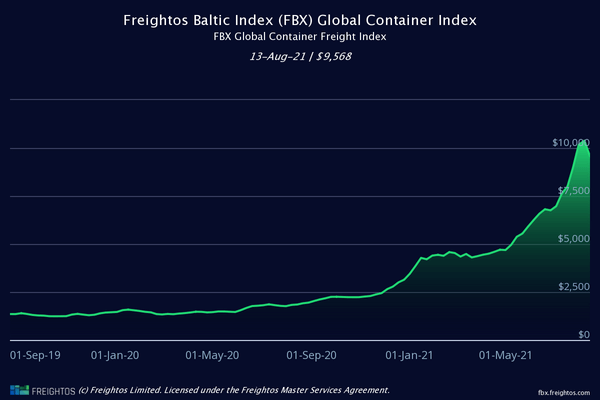
From the data of FBX Freightos, as of July 2021, transpacific rates continued to set new record highs on most trade lanes.
- Asia-US West Coast rates shot up to $18,346/FEU, more than 6x its level a year ago.
- Asia-US East Coast costs climbed to $19,620/FEU, 487% higher than last July.
- Asia-North Europe prices rocketed to $13,706/FEU, which also rose by more than 250% in the comparable period last year.
What’s more, transatlantic rates were increasing in July 2021, particularly on the lanes from Europe to America East Coast.
- Europe to North America East Coast prices were up by 6% to $6,013/FEU, triple their level a year ago.
- Europe to South America East Coast rates increased 56% to $3,311/FEU, nearly four times their level last year.

There is, however, little sign of a decrease in ocean shipping costs in the short term. Ocean freight rate continues to rise dramatically until Q4 2021 due to two peak seasons. You know international freight is not always smooth, and there are the two busiest times in the shipping year (also known as peak seasons).
The first lasts from mid-August through mid-October, before the peak holiday retail season. The second one is spurred by Lunar New Year in some Asian countries, often in January or February. The global demand is strong during these times, while container capacity can become scarce. That’s why ocean shipping costs are about to set new highs.
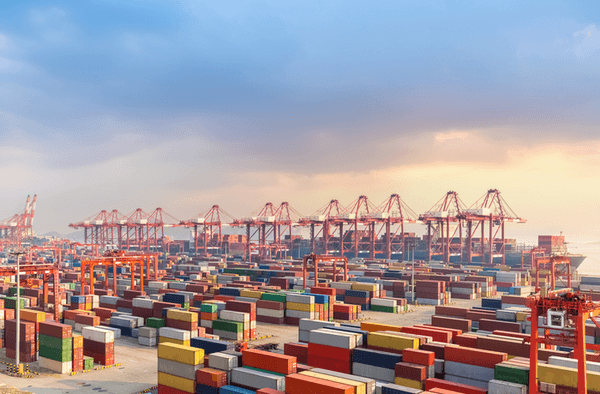
Let alone there are currently local lockdowns in Asian regions and countries due to the COVID-19 pandemic, which will probably cause disruptive effects on maritime transport and drive the rates further in the second half of 2021.
Why are ocean freight rates soaring dramatically?
With the soaring freight rates, 2021 is truly a challenging year for both exporters and importers because around 80% of all global goods are transported by sea. This great increase has been seen after the outbreak and spread of the COVID-19 pandemic. Then is the peak holiday shopping season.
Global imbalances post-pandemic
The trade imbalances are the main cause that pushes ocean freight rates up significantly. When the COVID-19 started to rage, production came to a halt. Countries across the globe lockdown and open up at different times. It caused an imbalance between supply and demand for goods. Moreover, shipping companies had to reduce the capacity on major routes. Port delays and closures occurred. It then led to a shortage of return cargo from destination ports and empty containers for export.
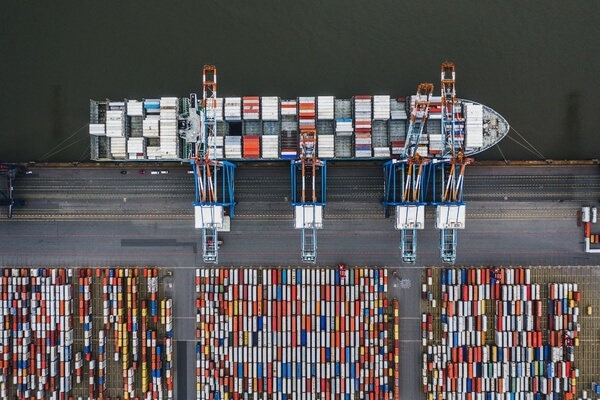
During the recovery time, the increase in consumer demand is stronger than expected, particularly in the sectors closely associated with international trade. Competition for ocean freight capacity has also become intense. Which has pushed the ocean freight much higher than the previous year.
The peak holiday shopping season
Currently, to keep up with the burgeoning consumer demand, retailers are hustling to restock their inventory, particularly for the peak holiday shopping season. But with delays and closures in ocean freight, many have to place peak season orders early. It’s all about avoiding congestion and being ‘stuck’ without back-to-school and other seasonal inventories.
As a result of the increased demand, freight costs have climbed on most lanes, with some carriers adding early peak surcharges to the already sky-high shipping rates.

Solutions to soaring ocean freight rates
There is currently no container production in Vietnam. Therefore, in response to this shortage of containers at ports, steel giant Hoa Phat Group plans to set up its first container factory in the southern region. According to VN Express, it is expected to manufacture 500,000 TEU containers annually. This steelmaker will focus on popular container products, with a length of 20-40 feet. Those containers produced by Hoa Phat will be launched on the market at the beginning of Q2 2022.

Besides that, the UNCTAD has come up with several suggestions for policymakers that can help to reduce the repeat occurrence in the future. Specifically, they are:
- Advancing trade facilitation reforms;
- Improving maritime trade tracking and forecasting;
- Strengthening national competition authorities.
First, governments need to make trade easier and less costly by implementing reforms. It is time to modernize trade procedures and minimize physical contact between workers in the shipping industry. Then supply chains would become more resilient and protect employees better during the pandemic.
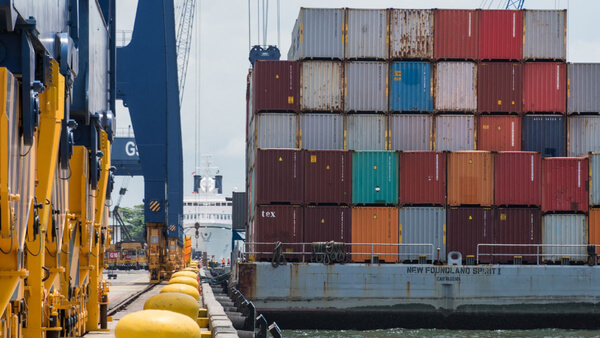
Second, governments must foster transparency and collaboration throughout the maritime supply chain. Which helps to improve how port calls and liner schedules are monitored.
Last but not least, governments must ensure competition authorities have the resources and expertise to investigate abusive practices in the shipping industry.
Ocean freight rates are driven up by the ongoing impacts of COVID-19 and the peak season in 2021. To see how the costs are going upward or downward 2022, FBX Freightos is a reliable source for you to get updated with exact information about global freight costs and logistics news.




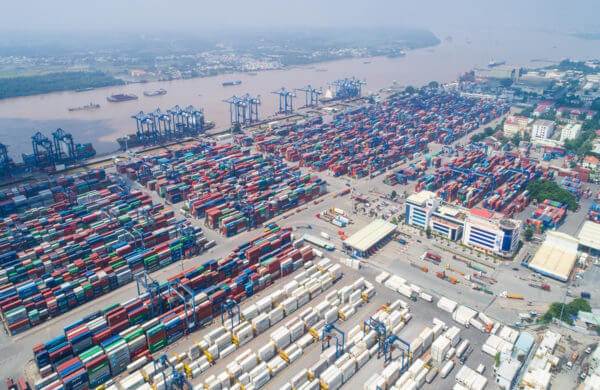
You may also be interested in
Spun Bamboo: How To Make Wholesale Bamboo Fiber Salad Tableware
Read more...Sep
Rattan vs Wicker – What’s The Sharp Difference?
Read more...May
4 Popular Basket Weaving Styles Of Rattan Baskets Wholesale
Read more...Dec
Care Guidelines For Your Business: How To Preserve Wicker Baskets
Read more...Jun
Rattan vs Wicker, Cane, Willow: Here is the difference between 4 popular terms
Read more...Nov
Comfort Home 2022 – All-new Wicker Collection of Storage Baskets & Planters
Read more...Jul